This is how the size of mobile screens has increased in recent years
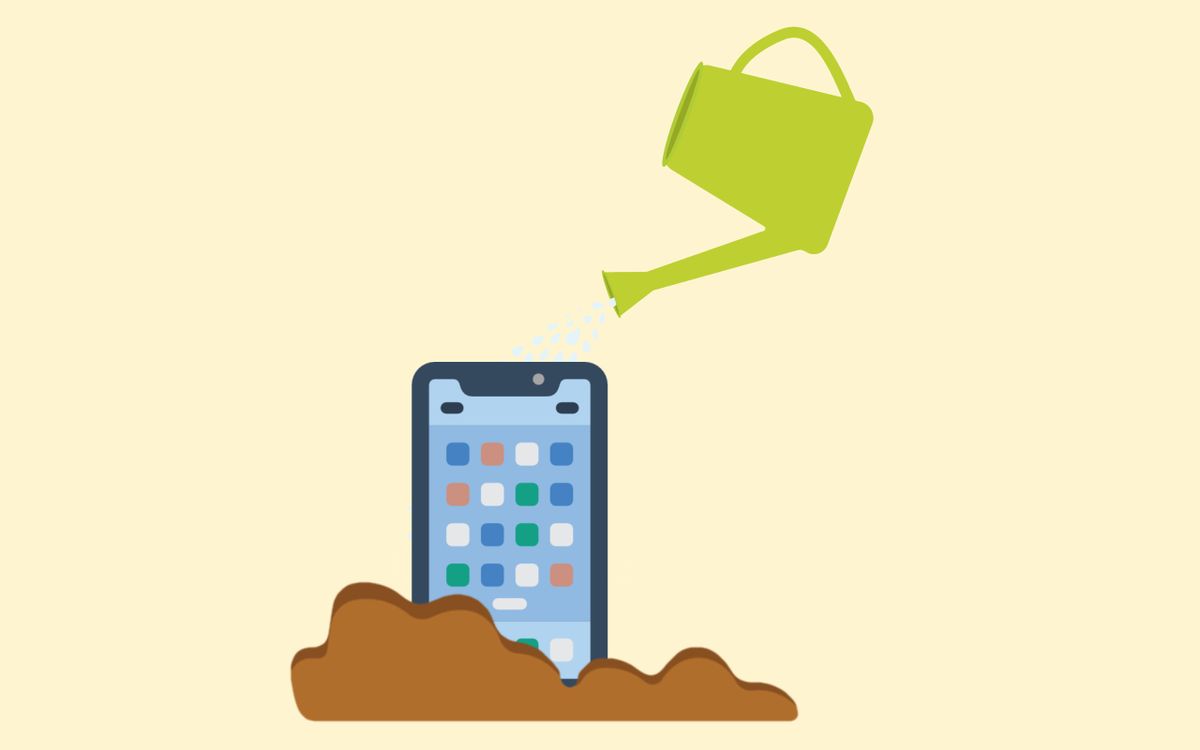
If you already had a smartphone 8 or more years ago, you surely remember that most mobile phones could be controlled with one hand thanks to their manageable screen sizes. Today, as you may have noticed, Mobile screens are bigger. Much bigger.
But at the same time, if you ask acquaintances and family, you will surely find a large number of people, very convinced, who tell you that they would never buy a smartphone as big as yours and that they prefer small phones.
That’s why I raise the doubt:What is the prevalence of large screen mobile phones in the current market and how has it evolved? compared to previous years?
Computer Today In this article, we collect the most recent data from analysts so that you know what the current acceptance of large screens is and how it has skyrocketed recently.
First of all: what is a big screen?
The truth is that the idea of when we start to consider a mobile phone screen to be large has evolved over time and, above all, with the launch of new models.
Today we could say that a mobile phone with a screen larger than 6.5 inches is considered largesince the standard in most new releases are 6.6-inch screens.
The panorama becomes more complicated starting in 2019 when the first folding mobile phones appear, with more and more models from more brands available, but this article will focus on traditional mobile phones, which still represent the vast majority – 268 million of them were sold in the world. mobiles in the second quarter of 2023 and only 2.1 million were foldable, according to Counterpoint.
And here another little one disclaimer: Larger screens do not necessarily mean larger mobile phones, since over time brands have been reducing the frames of their terminals to a minimum so that the screens grow but the dimensions remain the same.
2023 is the year of the surprise of screens of 6.5 inches or more
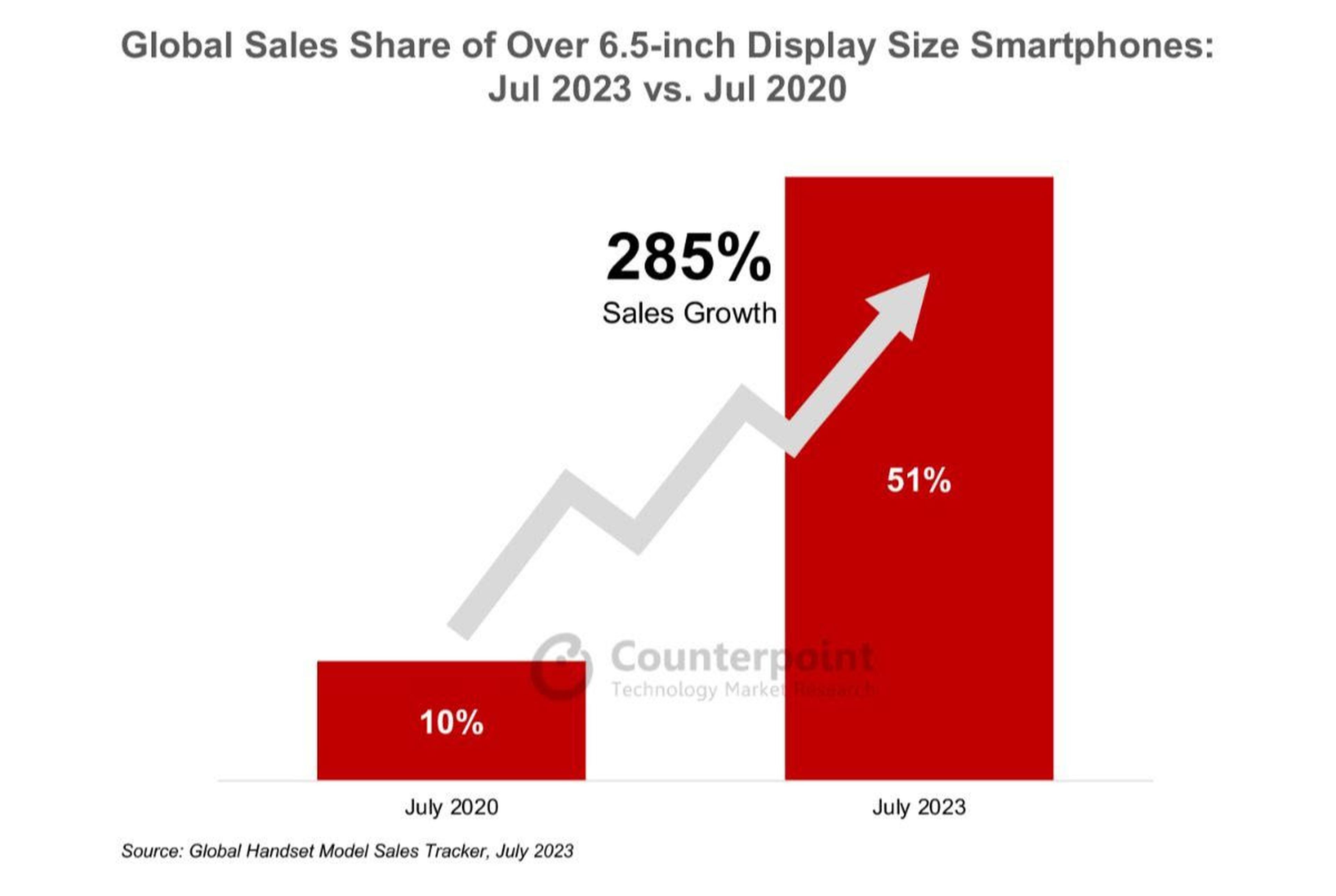
Counterpoint
This year 2023 marks an important milestone in terms of screen sizes, since for the first time large screens with more than 6.5 inches of surface area surpass smaller ones.
According to data from the analysis firm Counterpoint Research, In the month of July 2023, 51% of mobile phones with screens of 6.5 inches or more were soldthus outperforming the more compact variants.
This represents enormous growth compared to the state of the mobile market just 3 years ago, with an increase of 285% compared to July 2020, in which the percentage of large mobile phones barely exceeded 10%.
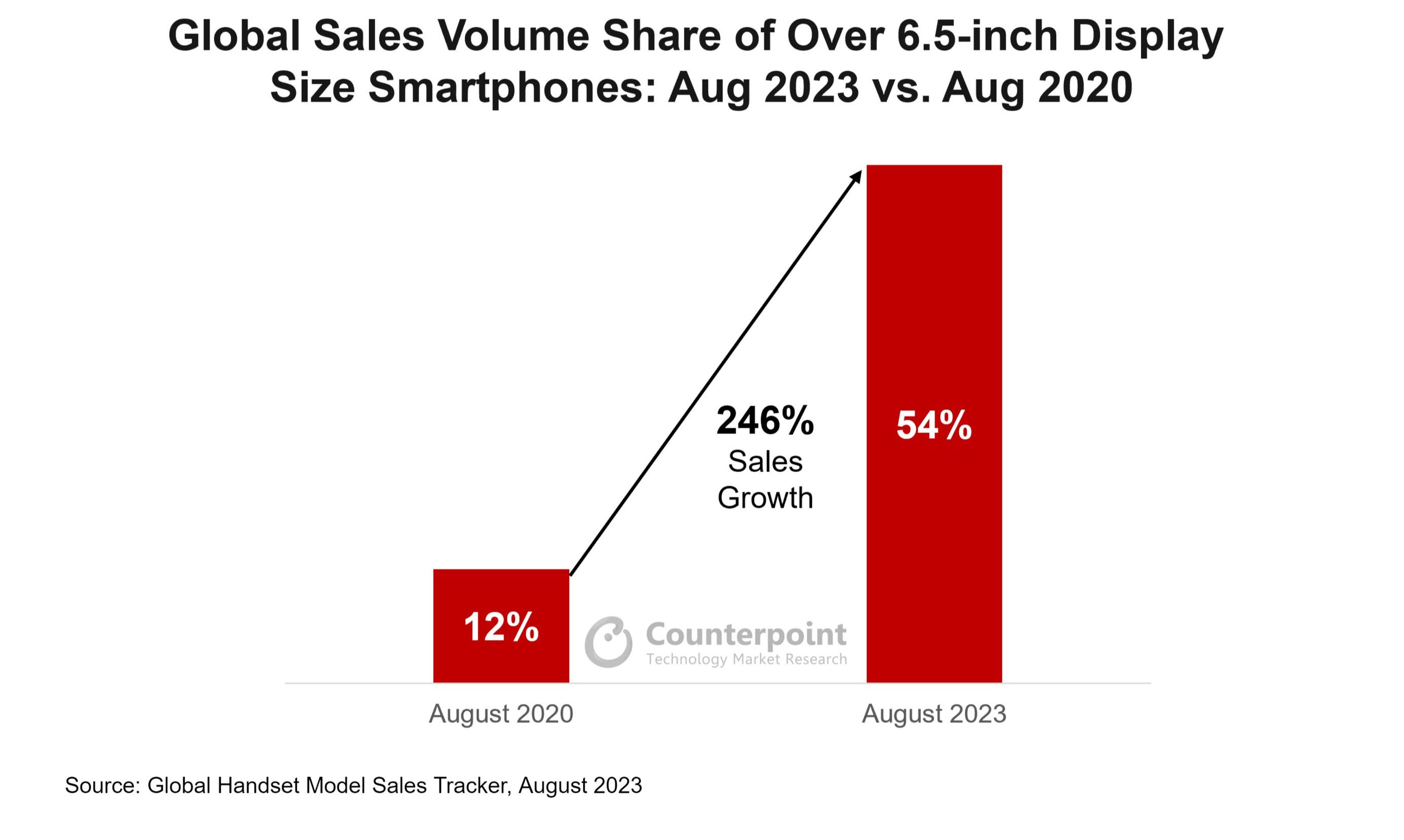
Counterpoint
This trend is not only here to stay but in the following months it is becoming even more consolidated.
According to the same analysis firm, the acceptance of screens of 6.5 inches or larger had risen to 54% in the month of August 2023, with a boom of 246% compared to just 3 years before.
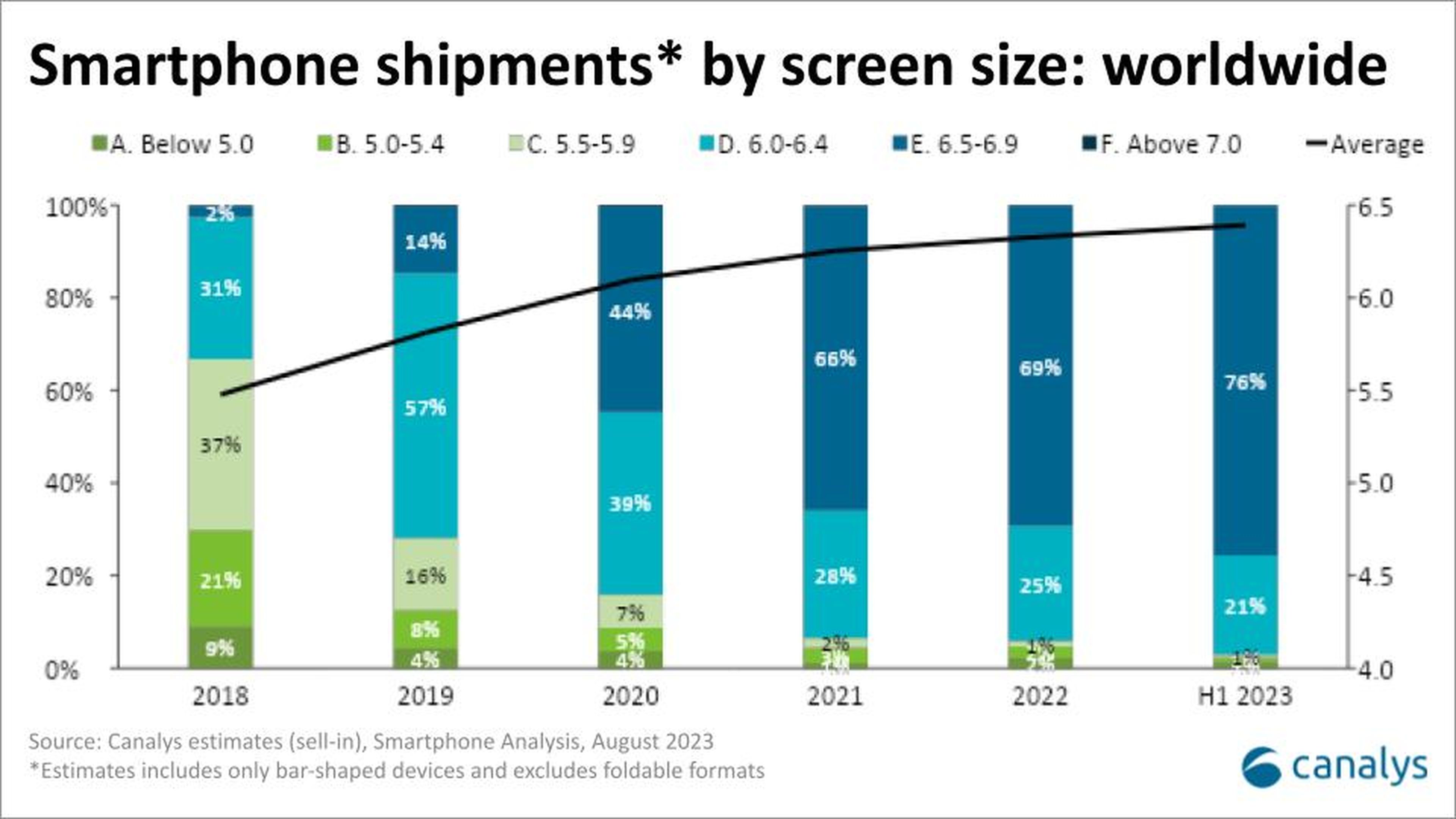
Canalys
This international trend also occurs in Spain, as shown by the data that the analyst Canalys has shared with Computer Today.
In the world, only 2% of mobile phones sold in 2018 had a screen, but this figure quickly increased to 44% in 2020 and even 76% in the first half of 2023. They are followed by mobile phones between 6 and 6.4 inches, with 21%, while 3% is distributed among smaller terminals.
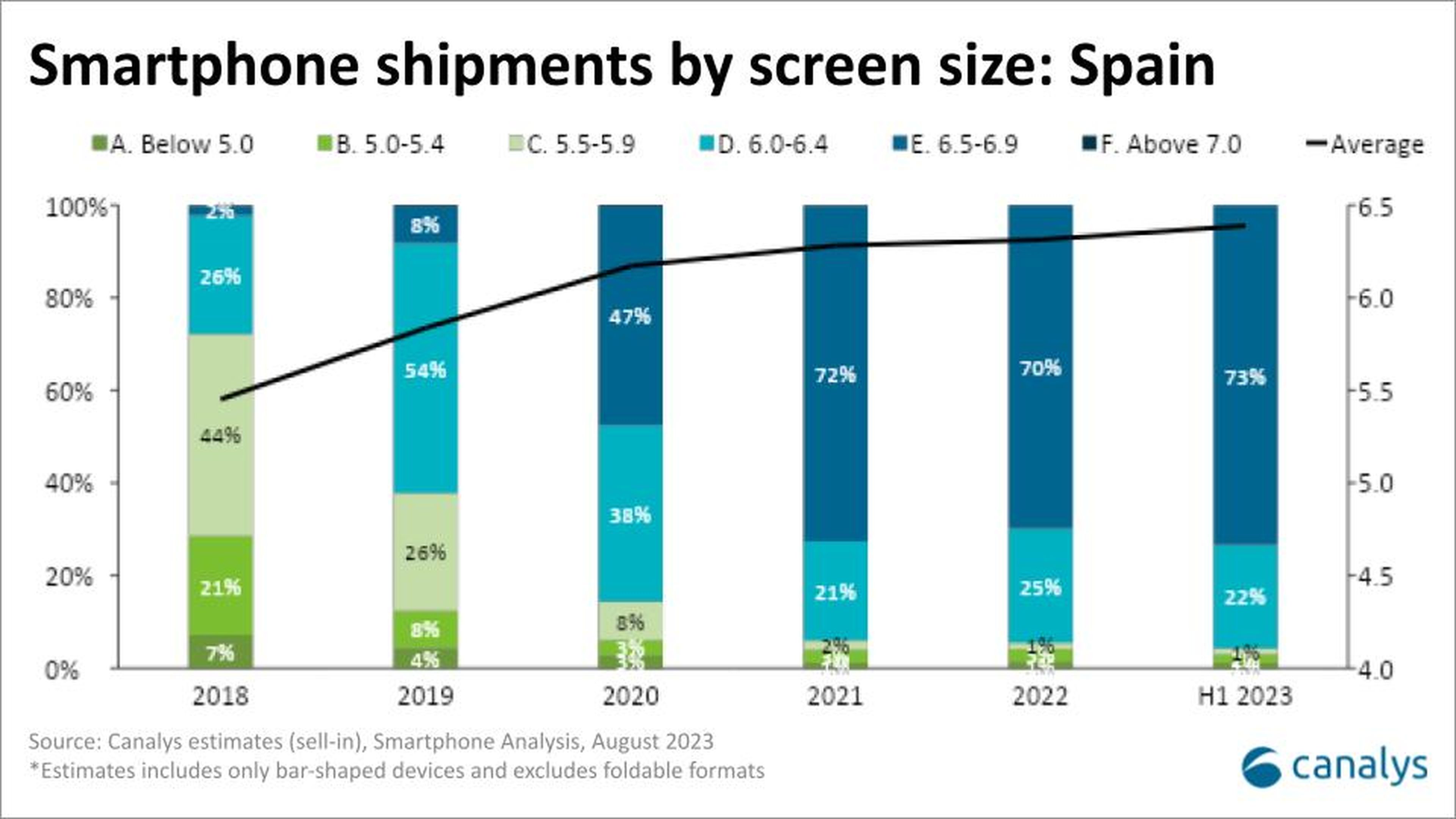
Canalys
In Spain we also started from just 2% of mobile phones with more than 6.5 inches in 2018, but the format of mobile phones with a large screen quickly convinced us and in fact between 2020 and 2022 Spain was above average in this aspect.
Currently, Spaniards prefer mobile phones between 6.5 and 6.9 inches in 73% of new smartphone sales, followed by 6 to 6.4-inch panels, with 22% of the market, according to the analyst estimates.
What consequences does this have for the user and for the industry?
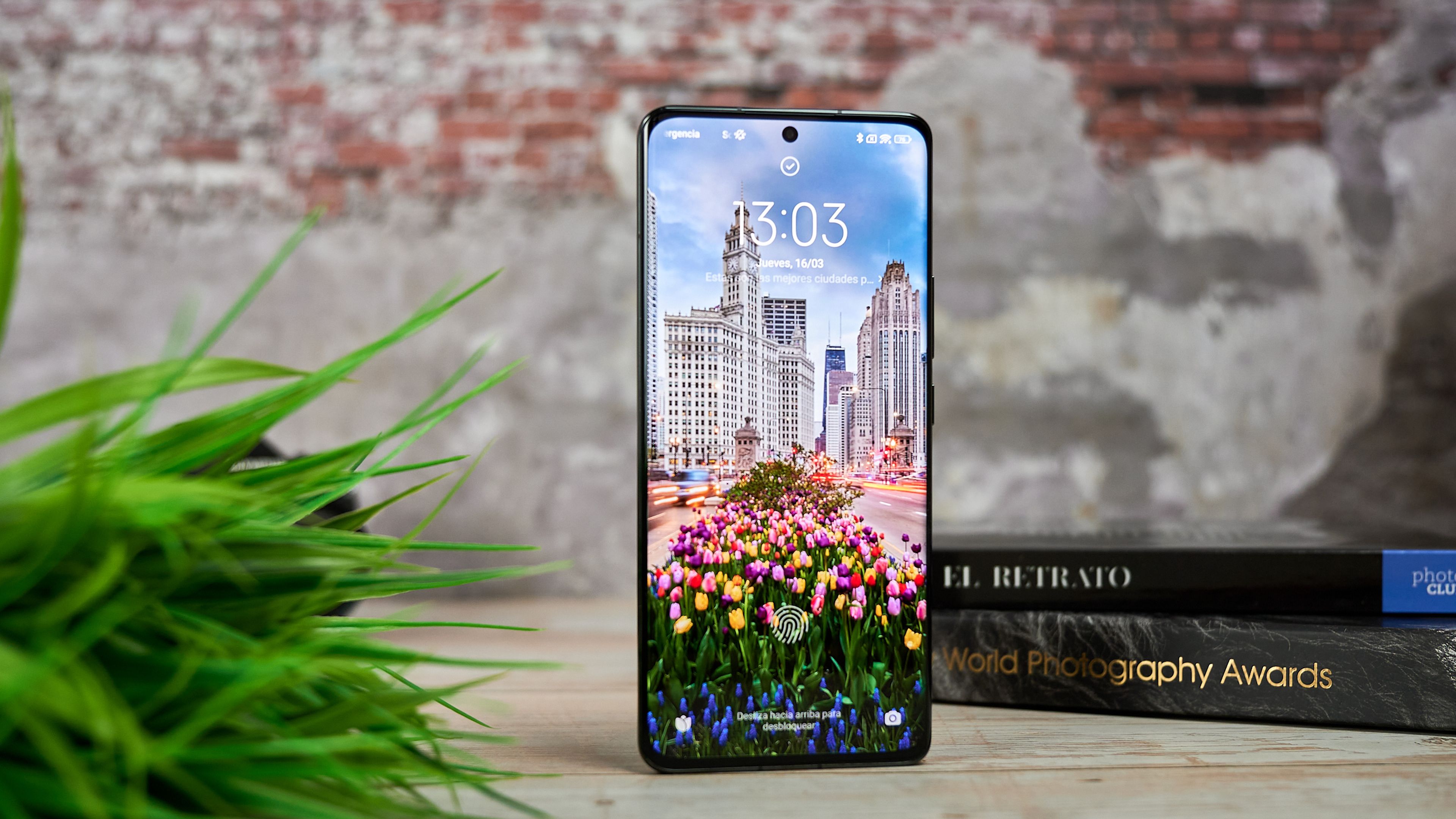
The increase in screen size has several global consequences for technology consumers, some more positive than others.
On the good side, large screens are no longer an element that increases the price of mobile phones and that is relegated to the high-end models, and now users with tight budgets who want one, even below 200 euros, will not have too many problems finding it.
And this has required manufacturing processes to adapt to the new reality.
“Advances in the supply chain have enabled the cost-efficient production of large, high-quality displays even in more affordable devices,” says Runar Bjørhovde, analyst at Canalys.
Thanks to larger screens, people can do more things from their mobile and without depending on other devices.
“Consumers, now accustomed to performing a wide range of tasks on their phones, from professional tasks to entertainment, naturally gravitate toward larger screens,” said Boyce Fan, vice president of research at TrendForce.
These mobile phones with larger screens are a reflection of consumers who have changed their digital habits.
“In the last decade there have been major behavioral changes that have driven the shift to larger screens. The increased interest in streaming, video calls, camera quality and navigation have favored larger screens, whereas before calls and text messages took precedence. This change accelerated during the pandemic due to remote work and technological needs,” agrees the Canalys analyst.
On the bad side, users looking for mobile phones that can be operated with one hand are finding it increasingly difficult to buy one because the exceptions are becoming increasingly scarce. This is the case of the standard iPhone 15 and iPhone 15 Pro, base Samsung Galaxy S23, Xiaomi 13 or Oppo Reno 10.
“Just 5 years ago, phones with screens smaller than 6 inches accounted for more than half of the market, but today they have become a niche product,” according to Bjørhovde.
Despite this, experts agree that compact mobile phones are still an option and they do not believe they will disappear in the short term.
“The market share of compact phones, with screens of about 6 inches or less, is declining, but they are not on the brink of extinction. A segment of consumers continues to value portability and lightweight designs, ensuring sustained, albeit lower, demand for compact smartphones for the foreseeable future,” notes Boyce Fan.
Will screens continue to grow even more?
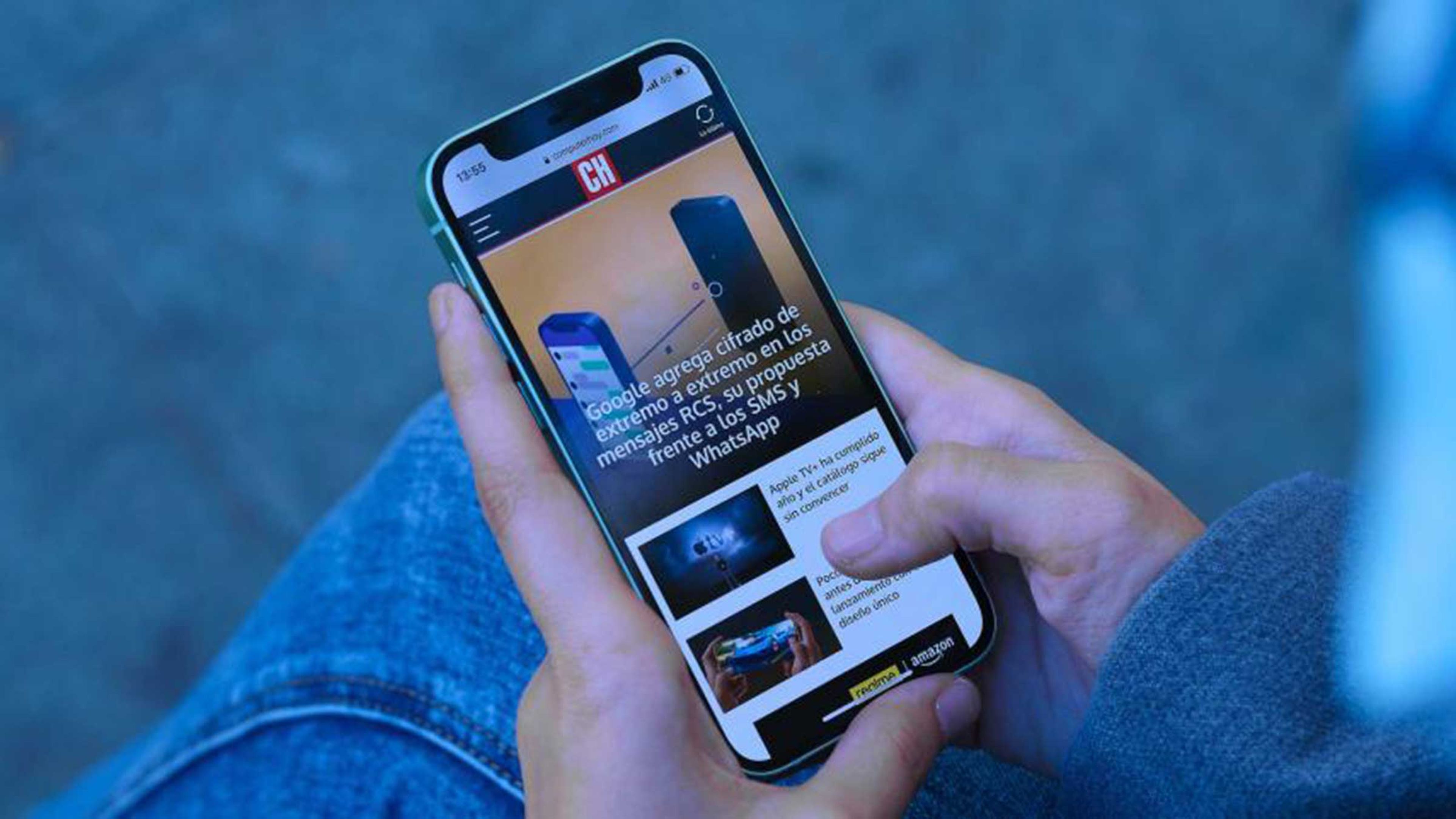
AAH
Given this situation, the question is whether the size of the screens has already reached its maximum or if it still has room to grow in smartphones in the coming years.
Experts agree that there are clear signs that mobile phones cannot grow much more.
“The trend towards ever-larger screens is close to reaching its limit, and the pace of growth is already declining,” says the TrendForce analyst.
This is something supported by Canalys data in Spain, where between 2021 and 2023 growth has stagnated between 70 and 73% prevalence of panels larger than 6.5 inches, in contrast to the rapid increase in previous years.
In addition to user preference, another aspect is determining that cell phones have stopped growing: the size of pants pockets, which has not changed.
“There have hardly been traditional mobile phones larger than 7 inches and this is due to the balance between screen size and portability. The challenge of carrying a cell phone larger than 18 centimeters diagonally in your pocket will limit growth in the future“says the Canalys expert.
And the other limitation that the industry faces is the size of people’s hands, which makes it impossible to handle terminals above 7 inches comfortably.
“6.8 inches is the maximum of mobile phones with traditional format. The size of human hands is the main limitation, as it is difficult to hold and use a phone with a screen that is too large,” says Karn Chauhan, senior analyst at Counterpoint Research.
Instead, the future of users who want even larger screens can only move in one direction: that of folding mobile phones, especially book-type folding ones, which provide an interior screen of dimensions comparable to that of a small but that can be carried in your pocket.
But be careful, because the current fever for large screens has no signs of disappearing, quite the opposite, so if you are a defender of compact formats you have reasons to be worried in the medium-long term.
“Thanks to the increase in media consumption on our devices, whether photos or streaming movies, and even the boost of social networks in our daily lives, the importance of bigger screens and more storage will continue to grow“, as predicted by Nabila Popal, IDC’s research director specializing in mobile phones.



